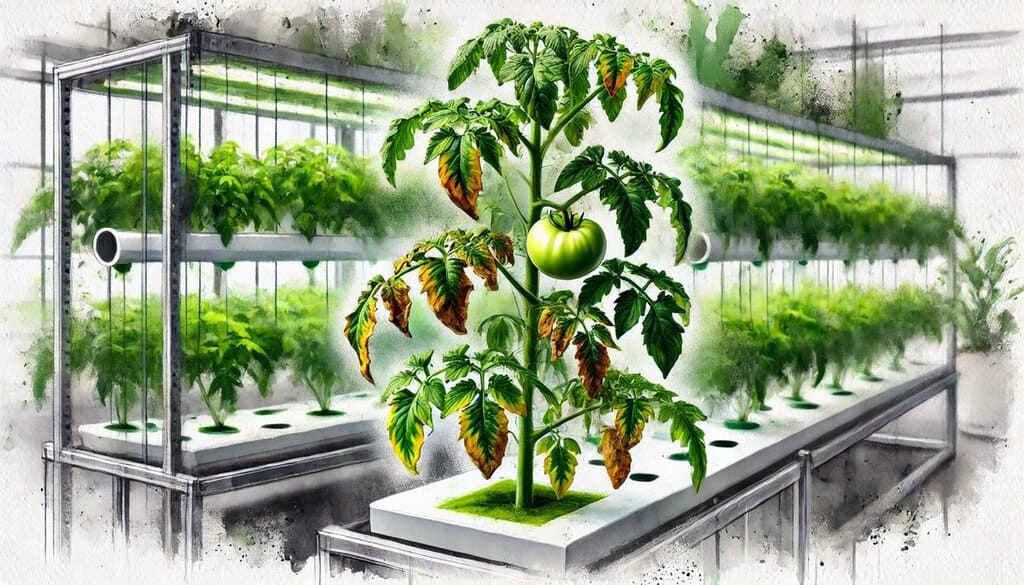Nutrient burn is a common issue in hydroponic systems that can be effectively managed through careful monitoring and adjustment of nutrient solution parameters. Here’s how to manage nutrient burn in hydroponics:
Optimize Nutrient Solution Concentration
The primary cause of nutrient burn is often an overly concentrated nutrient solution. To prevent this:
- Maintain the electrical conductivity (EC) of your nutrient solution within the optimal range. For lettuce, the ideal EC is between 1.2 and 1.6 mS/cm[2].
- Avoid high nutrient concentrations, as they can lead to calcium deficiency and tip burn in plants like lettuce[2].
Monitor and Adjust pH
Proper pH management is crucial for preventing nutrient burn:
- Keep the pH of your nutrient solution between 5.5 and 6.0 for optimal nutrient uptake and plant growth[2].
- Regularly check and adjust the pH, as it can fluctuate over time.
Ensure Proper Nutrient Balance
Balanced nutrition is key to preventing nutrient burn:
- Use a well-formulated nutrient solution that provides all essential elements in the correct proportions.
- Pay special attention to iron availability. In hydroponic systems, iron is often supplied as chelates like Fe-DTPA, which help maintain iron solubility and availability[1].
Implement a Flushing Routine
Periodically flushing your hydroponic system can help prevent nutrient buildup:
- Drain the nutrient solution and replace it with fresh, properly balanced solution every 1-2 weeks.
- This practice helps prevent salt accumulation and maintains optimal nutrient levels.
Please discard your old nutrient solution in an environmental way
Monitor Plant Health
Regular observation of your plants can help you catch and address nutrient burn early:
- Look for signs of nutrient burn, such as leaf tip browning or chlorosis (yellowing of leaves).
- If you notice these symptoms, reduce the nutrient concentration and adjust the pH as needed.
By carefully managing these aspects of your hydroponic system, you can effectively prevent and control nutrient burn, ensuring healthy plant growth and optimal yields.
External sources:
[1] https://www.semanticscholar.org/paper/b0eb11b1c69cff8057e91e99cbe9888a5974e3f5
[2] https://www.semanticscholar.org/paper/1bbb230a7cb11e8d756372113fd5dde7648555ff

